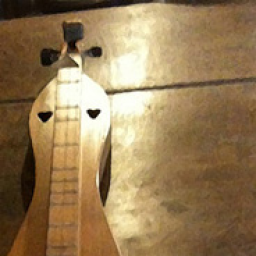Shorter scale dulcimers will sometimes need heavier strings to keep the pitch at DAd, and this could be where an element of the little loss of sustain mentioned by Joy comes into play. Personally, I tend to pitch up a little on shorter instruments. If you are playing mainly by yourself then there's no reason at all not to go to EBe on a 26" and just pretend it is in DAd. Remember on an acoustic guitar with a 25.5" scale it is common to play a 0.013 as the high 'e' with a medium gauge string set. So taking a 0.012 to high 'e' on a 26" dulcimer is not an issue. I was actually playing a 27" in F recently and it sounded lovely (I think that was with 0.010 melody strings). Every dulcimer behaves a little differently, so if you want a shorter scale, it is certainly worth playing around with string gauges and pitches to find out what sounds best on the instrument.
For some reason we all want to stay in the key of D but in reality we probably spend only a very small proportion of our playing time in situations where we must be in DAd. So if you do own dulcimers of different scales then I would recommend experimenting with different string gauges and different pitches to find what sound best on each one.


 ...
...
 McSpadden, Schnaufer model with 29" VSL
McSpadden, Schnaufer model with 29" VSL